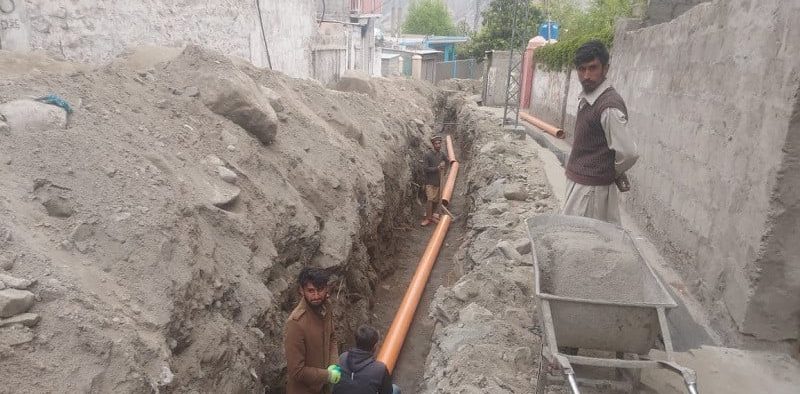Gilgit receives its first-ever sewage system project in a historic event

Gilgit, a picturesque town surrounded by mountains, is preparing for a historic first: a sewage and sanitation project. This program represents a sea change in the direction of better public health and environmental preservation.
The project, which should be finished by the end of 2025, will help about half a million residents in the town.
“Despite having an abundance of natural resources, such as lakes, springs, and fresh water sources, Gilgit has struggled for years with the lack of basic infrastructure,” stated former chief minister Hafiz Hafeezur Rehman. Rehman played a key role in getting the project designed back in 2015, when the Pakistan Muslim League-Nawaz (PML-N) was in power.
In addition to detracting from Gilgit City’s visual appeal, he said, “the lack of a sewerage system posed serious health risks to its residents, who had to contend with polluted water sources.”
The sewage and sanitary system project will encompass the following areas in this phase: Tablighi Markaz to Nagar Colony Konodas (package III) and Baseen to Bab-e-Gilgit (packages I and II).
The local community has embraced the initiative with hope and excitement, realizing that it has the potential to enhance their quality of life.
“We’ve long awaited a solution to our sanitation woes, and this project gives us hope for a cleaner and healthier future,” Amin Khan, a local, said. Khan says, “Unfortunately, we’ve had to deal with inadequate infrastructure for far too long,” reflecting the views of many others.
Project Director Shafqat Ali is leading this initiative and brings a wealth of experience and commitment to the table. “This project will solve our sanitation requirements for a long time,” Ali says, highlighting the importance of the undertaking for the people living in the town. “This project will not only address environmental concerns but also ensure access to clean drinking water, which is essential for public health.”
But early worries about the pipeline’s magnitude were voiced, especially on social media. Shafqat Ali allays the public worries by saying that the infrastructure has been planned to meet the town’s expanding requirements.
According to the project director, the sewage pipeline network for the whole collecting system spans 209 kilometers, with sewer pipe diameters ranging from 8 to 40 inches.
Tertiary sewers connect to major trunk sewers in the pipe network. According to him, the eight-inch pipeline that is being installed is only the start and will gather sewage from homes. As the volume of sewage increases, so will the size of the pipe network.
The project area’s whole sanitary sewage will be transported via a network of sewer pipes to a 4 MGPD mechanical sewage treatment plant, where it will be treated and made suitable for reuse.

I am a dedicated student currently in my seventh semester, pursuing a degree in International Relations. Alongside my academic pursuits, I am actively engaged in the professional field as a content writer at the Rangeinn website.









